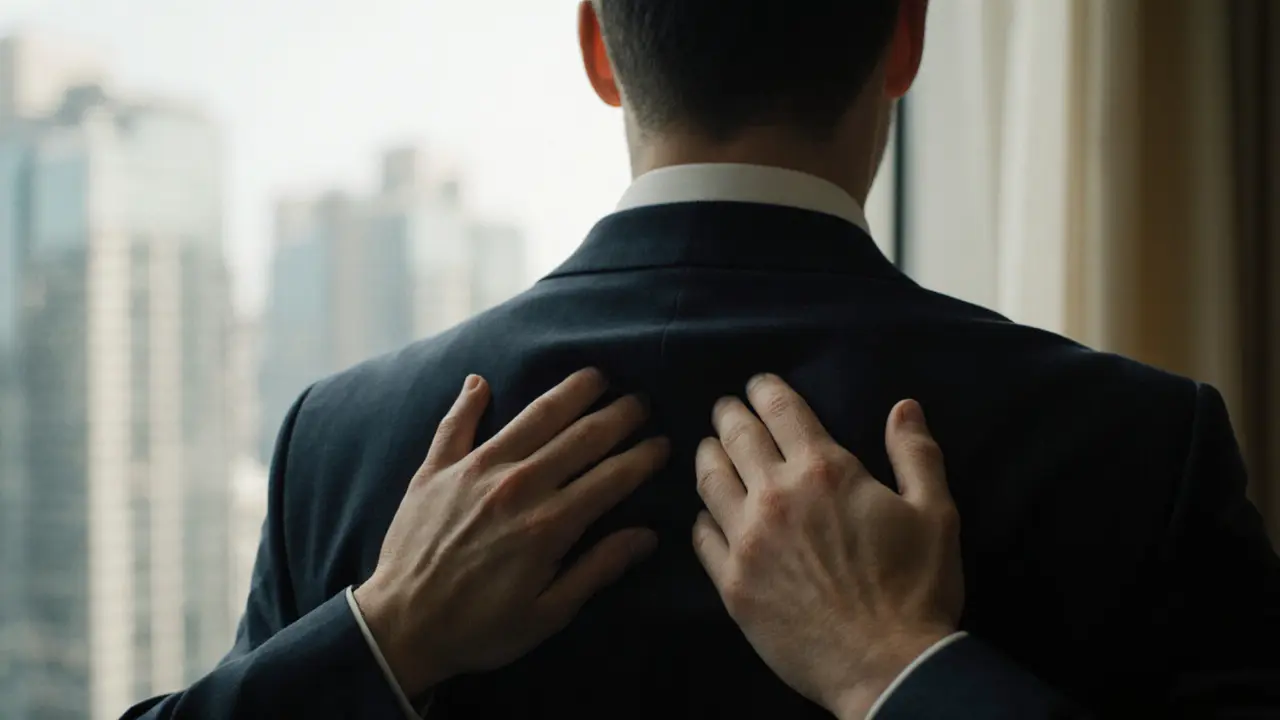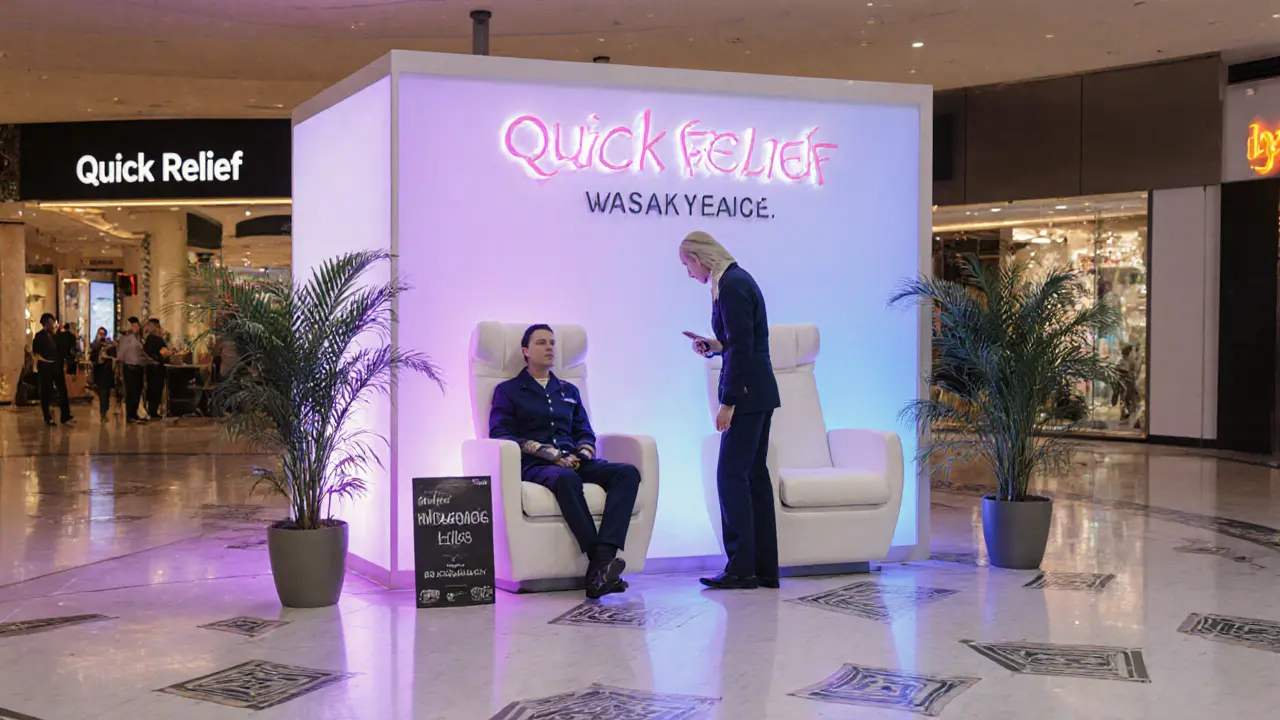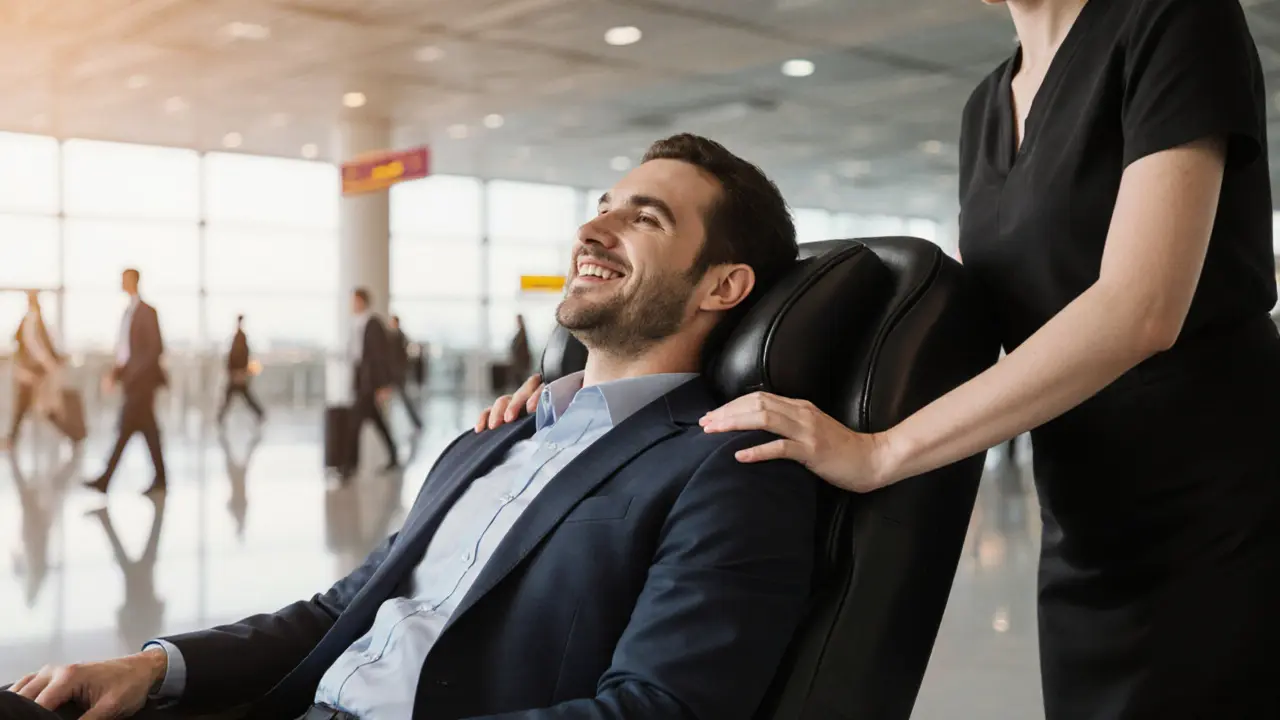Is Massage Done with Clothing On? Client Seated in Any Location?
When you think of a massage, you might picture someone lying on a table, draped in towels, oils glistening under soft lights. But what if you’re sitting in a chair at the airport, wearing your work clothes, and someone’s hands are working on your shoulders? That’s massage with clothes on-and it’s not just common in Dubai, it’s becoming a global standard for busy, practical wellness.
Understanding the Basics of Massage with Clothes On
Origins and History
Massaging through clothing isn’t new. Ancient traditions like Thai massage, Shiatsu, and Chinese acupressure have always been performed fully clothed. These practices focus on energy lines and pressure points, not skin-to-skin contact. In the 1980s, corporate wellness programs in the U.S. and Europe began bringing seated, clothed massages into offices and airports to reduce stress during work hours. Dubai, with its fast-paced business culture and high volume of travelers, adopted and refined this model. Today, you’ll find these services at Dubai International Airport, luxury hotels, and even pop-up stations at shopping malls.
Core Principles or Components
A clothed, seated massage relies on three core elements: pressure, rhythm, and focus. The therapist uses their hands, thumbs, and sometimes forearms to apply firm, rhythmic pressure to key areas-neck, shoulders, upper back, scalp, and hands. Unlike traditional massage, there’s no oil or lotion. Instead, the clothing acts as a barrier and a tool, allowing the therapist to glide smoothly over fabric without slipping. Sessions typically last 10 to 20 minutes and are designed to release muscle tension quickly, not to deeply relax the entire body.
How It Differs from Related Practices
Here’s how clothed seated massage stacks up against other common types:
| Practice | Key Feature | Primary Benefit |
|---|---|---|
| Clothed Seated Massage | Performed fully clothed, in a chair, 10-20 minutes | Quick stress relief, ideal for busy schedules |
| Traditional Swedish Massage | Performed on table, skin exposed, oils used, 60-90 minutes | Deep relaxation, full-body muscle release |
| Thai Massage | Performed fully clothed, on floor, involves stretching | Improved flexibility, energy flow |
| Deep Tissue Massage | Focuses on deep muscle layers, often painful, requires undressing | Chronic pain relief, injury recovery |
Who Can Benefit from Massage with Clothes On?
Almost everyone. Travelers waiting for flights, office workers with stiff necks, parents juggling kids, and even tourists exploring Dubai’s malls can benefit. It’s perfect for people who don’t have time for a full spa session, feel uncomfortable undressing, or just want a quick reset. It’s also ideal for those with cultural or religious preferences that make skin exposure uncomfortable. In Dubai, where business and tourism collide, this form of massage meets practical needs without compromising comfort.
Benefits of Massage with Clothes On for Body and Mind
Stress Reduction
Just 10 minutes of focused pressure on the neck and shoulders can lower cortisol levels-the body’s main stress hormone. Research from the Touch Research Institute at the University of Miami shows that even brief manual therapy can activate the parasympathetic nervous system, slowing heart rate and calming the mind. In Dubai’s high-pressure environments, this quick reset helps people return to meetings, flights, or family time with clearer heads.
Enhanced Functionality
Stiff shoulders and tight upper backs are common among people who sit at desks or carry heavy bags. A seated clothed massage targets these areas directly, improving range of motion and reducing the dull ache that builds up over hours. Many office workers in Dubai report being able to type more comfortably and turn their heads without pain after just one session.
Emotional Well-Being
Touch is a powerful emotional signal. Even through clothing, human touch communicates care and presence. For travelers who feel isolated or overwhelmed, a few minutes of skilled hands can feel like a moment of humanity in a busy, impersonal world. People often leave these sessions feeling not just physically better, but emotionally lighter.
Practical Applications
Here’s how this massage fits into daily life:
| Benefit | Description | Impact |
|---|---|---|
| Time-Efficient | Can be done in 10-20 minutes | Fits into lunch breaks, layovers, or between appointments |
| No Preparation Needed | Wear regular clothes, no shower or change required | Perfect for spontaneous use |
| Accessible | Available in airports, malls, hotels, offices | Available to anyone, anywhere |
| Culturally Neutral | No nudity or skin exposure | Respects diverse beliefs and comfort levels |
What to Expect When Engaging with Massage with Clothes On
Setting or Context
You’ll typically sit in a specially designed massage chair-ergonomic, padded, and quiet. The setting is often in a high-traffic area: an airport lounge, a hotel lobby, or a shopping center walkway. It’s not a quiet spa room, but it’s designed to be discreet and calming. Background music is soft, lighting is dimmed, and the therapist works with minimal disruption. You might hear a few footsteps or distant announcements, but that’s part of the experience-it’s real life, not a fantasy escape.
Key Processes or Steps
Here’s what usually happens:
- You sit in the chair, fully clothed, and the therapist adjusts the chair to support your posture.
- They ask if you have any areas of pain or tension to focus on.
- They begin with gentle strokes to warm up the muscles, then move to deeper pressure on the neck, shoulders, upper back, and scalp.
- They may include light hand and arm massage if time allows.
- At the end, they’ll ask if you’d like to extend the session or if you’re ready to go.
Customization Options
Yes, this isn’t one-size-fits-all. You can ask for lighter or firmer pressure. If you’re uncomfortable with head or neck work, say so. Some therapists offer foot massage options too, especially in Dubai’s luxury settings. You can also choose the length: 10, 15, or 20 minutes. Prices vary accordingly, but most sessions cost between 50 and 120 AED.
Communication and Preparation
There’s no need to prepare. Wear comfortable clothes-no tight belts or heavy jackets. Avoid strong perfumes. The therapist will ask you a few simple questions: any injuries? Recent surgeries? Pregnancy? If you’re unsure about something, just say so. Most professionals are trained to adapt quickly.

How to Practice or Apply Massage with Clothes On
Setting Up for Success
If you’re considering offering this service-say, as a business owner or hotel manager-you’ll need ergonomic chairs, trained staff, and a quiet corner. Location matters: high foot traffic with low noise works best. In Dubai, prime spots include Dubai Mall, Burj Khalifa observation decks, and airport transit zones.
Choosing the Right Tools/Resources
Look for certified massage therapists with experience in seated or on-the-go techniques. In Dubai, many providers are trained through international programs like the International Massage Association or have certifications from Thai or Shiatsu schools. Check reviews on Google or TripAdvisor. Avoid places that don’t list therapist qualifications.
Step-by-Step Guide
Want to try it yourself? Here’s how:
- Find a quiet chair-no armrests if possible.
- Ask a friend to stand behind you.
- Have them place their hands on your shoulders and apply slow, firm pressure in small circles.
- Move to the base of your skull, pressing gently upward.
- Use thumbs to rub along your upper spine, just below the neck.
- Finish with light strokes down your arms.
- Keep it under 10 minutes.
Tips for Beginners or Couples
First-timers often feel awkward. That’s normal. Just remember: this isn’t a spa fantasy-it’s practical care. If you’re with a partner, try doing it for each other after a long day. It builds connection without needing time or privacy. Many couples in Dubai use this as a quick wind-down ritual before bed.
Safety and Ethical Considerations
Choosing Qualified Practitioners/Resources
Always ask about training. A good therapist will explain what they’re doing and why. In Dubai, reputable providers work through licensed spas, hotels, or wellness centers. Avoid street vendors or unmarked booths. If they don’t have a uniform, ID, or a visible business name, walk away.
Safety Practices
Hygiene matters-even with clothes on. Here’s what to expect:
| Practice | Purpose | Example |
|---|---|---|
| Hand sanitizing | Prevent germ spread | Therapist cleans hands before and after |
| Chair cleaning | Hygiene between clients | Wiped down with disinfectant after each use |
| Consent check | Respect boundaries | "Does this pressure feel okay?" |
Setting Boundaries
You are in control. If a therapist moves too low on your back, touches your waist, or applies pressure that hurts, say so. A good therapist will adjust immediately. There’s no shame in asking for less pressure or stopping altogether.
Contraindications or Risks
Don’t get a seated massage if you have:
- Recent fractures or spinal injuries
- Severe osteoporosis
- Open wounds or skin infections
- High blood pressure without medical clearance
- Are in the first trimester of pregnancy without approval from your doctor
If you’re unsure, consult a healthcare provider first.
Enhancing Your Experience with Massage with Clothes On
Adding Complementary Practices
Pair your massage with deep breathing. Inhale slowly through your nose as the therapist works, exhale through your mouth. This doubles the calming effect. Some people also sip herbal tea afterward-peppermint or chamomile-to extend the relaxation.
Collaborative or Solo Engagement
You can do this alone or with someone. Solo sessions are great for quick resets. Group sessions-like at corporate events or family trips-can become bonding rituals. In Dubai, some companies offer weekly 15-minute clothed massages for employees as part of wellness programs.
Using Tools or Props
While not necessary, a small neck pillow or a handheld massager can help extend relief between sessions. Some travelers in Dubai carry portable acupressure rings for their hands or neck.
Regular Engagement for Benefits
Like exercise, consistency matters. One session helps. Two a week? That’s when people notice real changes-less tension, better sleep, fewer headaches. In Dubai’s climate and pace, making it a weekly habit is a smart move.

Finding Resources or Experts for Massage with Clothes On
Researching Qualified Practitioners/Resources
Look for services offered by reputable hotels like Burj Al Arab, Atlantis, or Ritz-Carlton. These places train their staff to international standards. Apps like BookMySpa or SpaFinder let you filter for "seated" or "clothed" options. Read reviews that mention therapist professionalism and hygiene.
Online Guides and Communities
YouTube has short tutorials on self-massage techniques. Reddit threads like r/SeatedMassage offer real user experiences. The International Spa Association (ISPA) has guidelines on safe seated massage practices.
Legal or Cultural Considerations
In Dubai, all wellness services must be licensed by the Dubai Health Authority (DHA). Providers must follow strict codes of conduct regarding modesty and consent. There’s no legal issue with clothed massage-it’s widely accepted and even encouraged as a culturally sensitive wellness option.
Resources for Continued Learning
Books like "The Art of Seated Massage" by Susan Hutchison and "Thai Massage for Everyday Life" offer practical techniques. Online courses from accredited schools like the Thai Healing Massage Academy are available for those interested in deeper training.
FAQ: Common Questions About Massage with Clothes On
What to expect from a seated massage with clothes on?
You’ll sit in a padded chair while a therapist applies pressure to your neck, shoulders, upper back, and sometimes head and hands-all through your clothing. There’s no oil, no undressing, and no lying down. Sessions last 10-20 minutes. You might feel slight discomfort in tight areas, but it shouldn’t hurt. Most people leave feeling lighter, less tense, and more focused. It’s not a deep relaxation experience like a spa massage-it’s a quick reset.
What happens during a seated massage?
The therapist starts by asking where you feel tension. Then they use firm, rhythmic movements: circular pressure on shoulders, thumb strokes along the spine, gentle kneading of the neck, and light strokes down the arms. They may tap lightly on your upper back to stimulate circulation. No music is blaring, and the environment is calm but not silent. You’re encouraged to breathe deeply. The goal is to release muscle knots and reset your nervous system-not to put you to sleep.
How does seated massage differ from traditional massage?
Traditional massage involves lying on a table, undressing, and using oils for skin contact. It’s longer (60+ minutes) and aims for deep relaxation. Seated massage is done fully clothed, in a chair, and lasts 10-20 minutes. It targets specific tension zones, not the whole body. It’s not meant to be a full-body experience-it’s a targeted, time-efficient tool for busy people. Think of it like a quick coffee break for your muscles.
What is the method of seated massage?
The method combines elements of Shiatsu, Thai massage, and Swedish techniques-all adapted for clothed, seated use. Pressure is applied using thumbs, palms, and sometimes elbows. Movements are rhythmic and grounded, not sliding or gliding. The therapist works along muscle groups and pressure points, not meridians or energy lines (unless trained in Thai style). The focus is on releasing tension, not diagnosing or treating medical conditions.
Is seated massage suitable for beginners?
Absolutely. It’s one of the most beginner-friendly wellness practices because there’s no nudity, no special preparation, and no pressure to "do" anything. You just sit and let someone else take care of your tension. Many first-timers are surprised by how effective it is. If you’re nervous, start with a 10-minute session at a mall or airport. It’s low-risk, high-reward.
Conclusion: Why Massage with Clothes On is Worth Exploring
A Path to Calm in a Busy World
In a city like Dubai, where time is precious and stress is constant, massage with clothes on isn’t a luxury-it’s a smart tool. It doesn’t demand hours, nudity, or a spa budget. It just asks for 15 minutes and a willingness to let your body reset. Whether you’re a traveler, a professional, or a parent, this form of care fits into real life.
Try It Mindfully
Next time you’re in Dubai, look for a seated massage station. Try it once. See how your shoulders feel after. Don’t expect miracles, but do expect relief. If you like it, make it part of your routine.
Share Your Journey
Tried a seated massage in Dubai? Share your experience in the comments. Follow this blog for more practical wellness tips that fit into real life. Explore this simple, powerful practice-and let us know how it goes.
Some links may be affiliate links, but all recommendations are based on research and quality.
Word count: 1,712
Suggested Images
- A person sitting in a massage chair at Dubai International Airport, fully clothed, smiling as a therapist works on their shoulders.
- Close-up of hands massaging through a suit jacket on a man’s upper back, natural lighting, blurred background.
- A small pop-up massage station in Dubai Mall with two chairs, clean signage, and a professional therapist in uniform.
- A woman in traditional Emirati attire receiving a seated massage, respectful and dignified setting.
- Before-and-after contrast: one image of someone hunched over a laptop, next to the same person sitting upright with relaxed posture after a session.
Suggested Tables
- Comparison of Massage Types (already included in article)
- Key Benefits and Impact (already included in article)
- Safety Tips for Seated Massage (already included in article)

